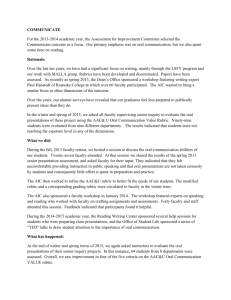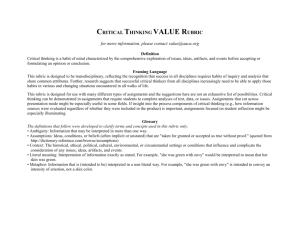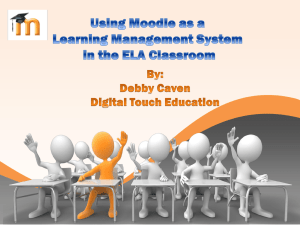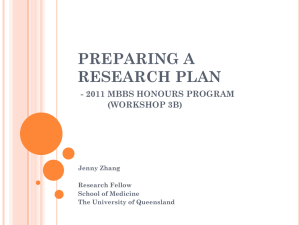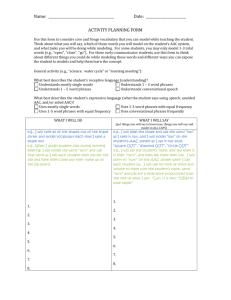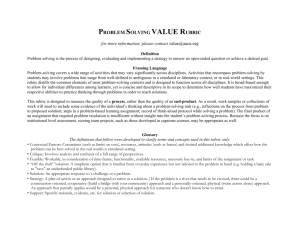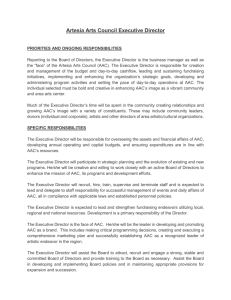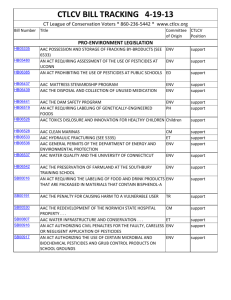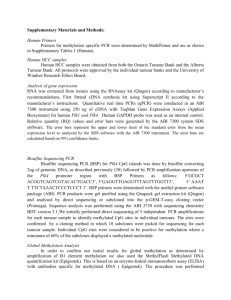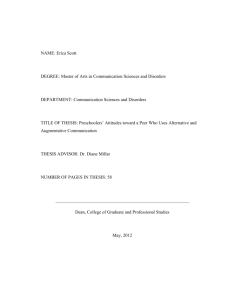STLR Student Learning Outcomes
advertisement
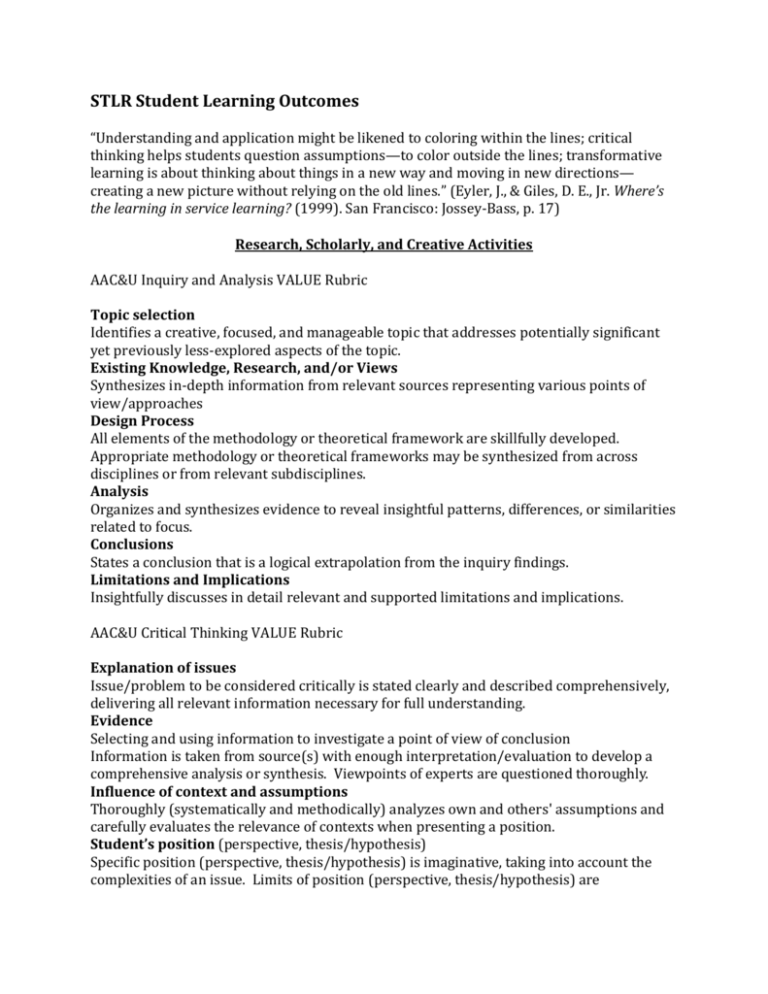
STLR Student Learning Outcomes “Understanding and application might be likened to coloring within the lines; critical thinking helps students question assumptions—to color outside the lines; transformative learning is about thinking about things in a new way and moving in new directions— creating a new picture without relying on the old lines.” (Eyler, J., & Giles, D. E., Jr. Where’s the learning in service learning? (1999). San Francisco: Jossey-Bass, p. 17) Research, Scholarly, and Creative Activities AAC&U Inquiry and Analysis VALUE Rubric Topic selection Identifies a creative, focused, and manageable topic that addresses potentially significant yet previously less-explored aspects of the topic. Existing Knowledge, Research, and/or Views Synthesizes in-depth information from relevant sources representing various points of view/approaches Design Process All elements of the methodology or theoretical framework are skillfully developed. Appropriate methodology or theoretical frameworks may be synthesized from across disciplines or from relevant subdisciplines. Analysis Organizes and synthesizes evidence to reveal insightful patterns, differences, or similarities related to focus. Conclusions States a conclusion that is a logical extrapolation from the inquiry findings. Limitations and Implications Insightfully discusses in detail relevant and supported limitations and implications. AAC&U Critical Thinking VALUE Rubric Explanation of issues Issue/problem to be considered critically is stated clearly and described comprehensively, delivering all relevant information necessary for full understanding. Evidence Selecting and using information to investigate a point of view of conclusion Information is taken from source(s) with enough interpretation/evaluation to develop a comprehensive analysis or synthesis. Viewpoints of experts are questioned thoroughly. Influence of context and assumptions Thoroughly (systematically and methodically) analyzes own and others' assumptions and carefully evaluates the relevance of contexts when presenting a position. Student’s position (perspective, thesis/hypothesis) Specific position (perspective, thesis/hypothesis) is imaginative, taking into account the complexities of an issue. Limits of position (perspective, thesis/hypothesis) are acknowledged. Others' points of view are synthesized within position (perspective, thesis/hypothesis). Conclusions and related outcomes (implications and consequences) Conclusions and related outcomes (consequences and implications) are logical and reflect student’s informed evaluation and ability to place evidence and perspectives discussed in priority order. AAC&U Creative Thinking VALUE Rubric Acquiring Competencies Reflect: Evaluates creative process and product using domain-appropriate criteria. Taking Risks Actively seeks out and follows through on untested and potentially risky directions or approaches to the assignment in the final product. Solving Problems Not only develops a logical, consistent plan to solve problem, but recognizes consequences of solution and can articulate reason for choosing solution. Embracing Contradictions Integrates alternate, divergent, or contradictory perspectives or ideas fully. Innovative Thinking Extends a novel or unique idea, question, format, or product to create new knowledge or knowledge that crosses boundaries. Connecting, Synthesizing, Transforming Transforms ideas or solutions into entirely new forms. AAC&U Problem Solving VALUE Rubric Define Problem Demonstrates the ability to construct a clear and insightful problem statement with evidence of all relevant contextual factors. Identify Strategies Identifies multiple approaches for solving the problem that apply within a specific context. Propose Solutions/Hypotheses Proposes one or more solutions/hypotheses that indicates a deep comprehension of the problem. Solution/hypotheses are sensitive to contextual factors as well as all of the following: ethical, logical, and cultural dimensions of the problem. Evaluate Potential Solutions Evaluation of solutions is deep and elegant (for example, contains thorough and insightful explanation) and includes, deeply and thoroughly, all of the following: considers history of problem, reviews logic/reasoning, examines feasibility of solution, and weighs impacts of solution. Implement Solutions Implements the solution in a manner that addresses thoroughly and deeply multiple contextual factors of the problem. Evaluate Outcomes Reviews results relative to the problem defined with thorough, specific considerations of need for further work. AAC&U Integrative Learning VALUE Rubric Connections to Experience Meaningfully synthesizes connections among experiences outside of the formal classroom (including life experiences and academic experiences such as internships and travel abroad) to deepen understanding of fields of study and to broaden own points of view. Connections to Discipline Independently creates wholes out of multiple parts (synthesizes) or draws conclusions by combining examples, facts, or theories from more than one field of study or perspective. Transfer Adapts and applies, independently, skills, abilities, theories, or methodologies gained in one situation to new situations to solve difficult problems or explore complex issues in original ways. Integrated Communication Fulfills the assignment(s) by choosing a format, language, or graph (or other visual representation) in ways that enhance meaning, making clear the interdependence of language and meaning, thought, and expression. Reflection and Self-Assessment Envisions a future self (and possibly makes plans that build on past experiences that have occurred across multiple and diverse contexts).

